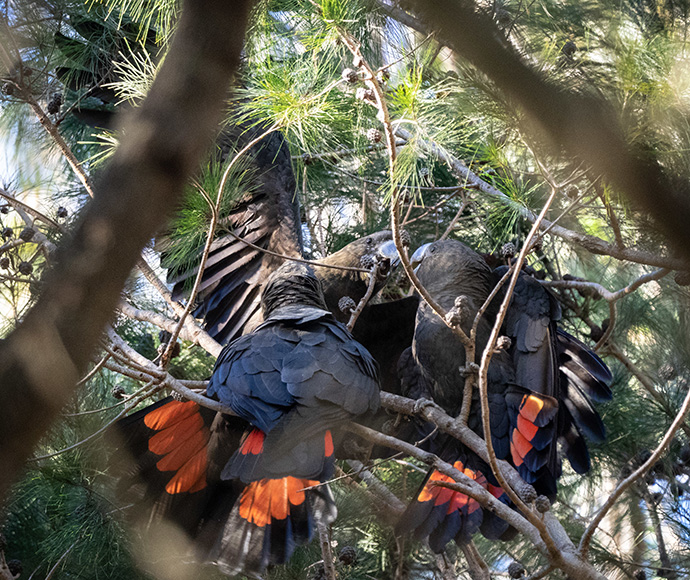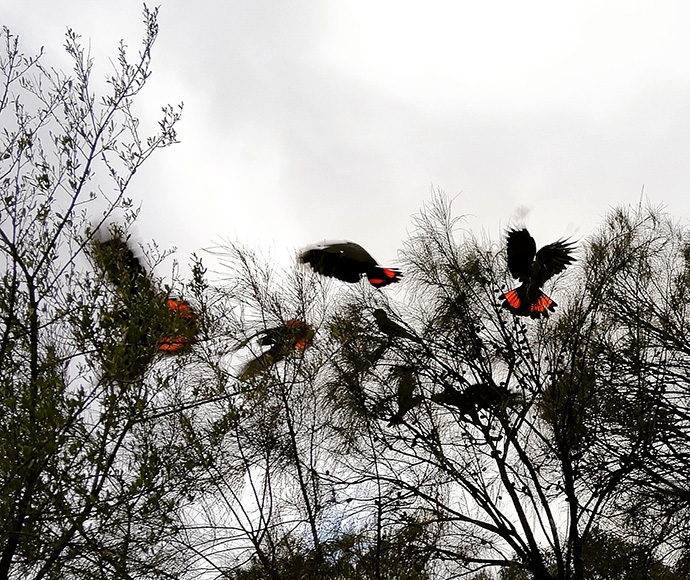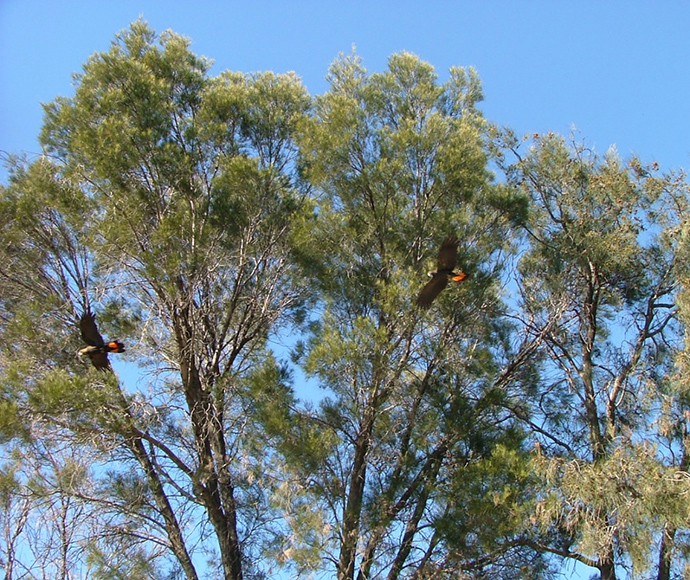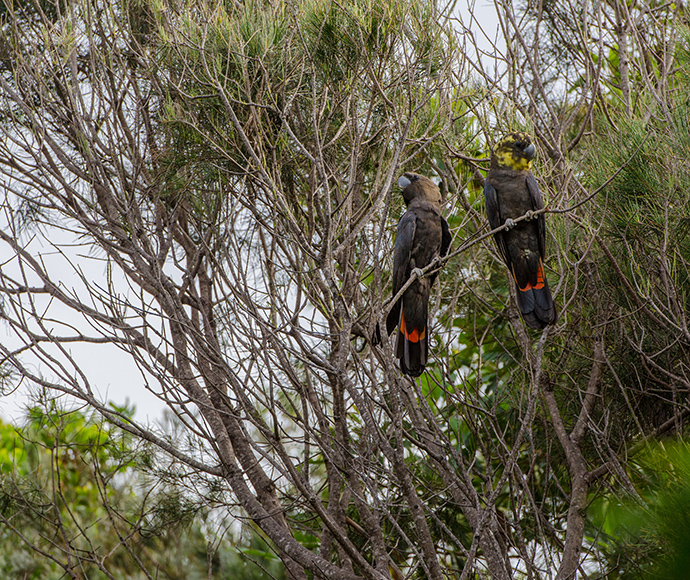The Great Western Wildlife Corridor (GWWC) is an important landscape connection for the glossy black-cockatoo (Calyptorhynchus lathami lathami).
Located between Bullio and Bungonia, it’s the only vegetated habitat corridor between the Southern Blue Mountains and Morton National Park.
Glossy black-cockatoos, or glossies, are listed as vulnerable in News South Wales. These amazing birds need corridors of native vegetation with big tree hollows for nesting and feed trees such as she-oaks (Allocasuarina spp.) to move across the broader landscape and thrive.
The GWWC is being increasingly divided into smaller lots and cleared for new housing, fences and infrastructure. This fragmentation of the corridor along with heavy impacts by the black summer bushfires means that without help we may lose a vital landscape connection for Glossies into the future.
The Glossies in the Mist project
The project aims to:
- secure foraging and breeding habitat for glossies by increasing the health of the GWWC on private land
- identify and protect key feed trees
- map and protect nesting hollows within the GWWC
- engage the community and landholders to care for glossies and their habitat.
Funded by the Saving our Species program and the Wingecarribee Shire Council’s Environment Levy, the project partners with landholders in Bullio, Wombeyan Caves, High Range, Mandemar, Canyonleigh, Belanglo, Paddys River, Wingello, Penrose, Tallong, Marulan and Bungonia areas within the GWWC.
Results
From 2018 to 2023:
- 25,000 trees planted across the corridor to improve connectivity and habitat for Glossies
- 44 hectares (ha) planted across 31 properties, totalling 200 ha contributed to Wingecarribee Shire Council’s Land for Wildlife program
- 15 nest boxes deployed and monitored
- 15,000 nest-box monitoring photos processed by 545 citizen scientists in the Australian Museum’s DigiVol platform, finding one female glossy checked out a nest box in 2021
- 850 sightings of glossies and 2,300 records of feed trees submitted to BioNet
- over 280 individual females identified from photos through the Flossy ID citizen science project.
Landholders, we need your help!
We want landowners to:
- report sightings of glossy black-cockatoos and send in photos of female glossies
- map, protect and plant stands of key Allocasuarina feed trees
- report and protect large hollow-bearing trees on their properties, which are essential for glossy breeding
- protect and propagate plants for the retention of glossy habitat
- plant feed and nest trees on private land.
If you would like to participate, we can provide locally sourced Allocasuarina tubestock for you to plant and improve foraging habitat for glossy black cockatoos.
These plantings and tree give-aways are dependent on season and rainfall. If the weather is too dry for planting now, please contact us and we can put you on the list for the next rainy season.
The Glossies in the Mist project has a broad reach and depth of research thanks to the support and enthusiasm of our dedicated volunteers, landholders and project partners. Thank you for your time and effort; it has truly become a community-wide project.
The information you provide in this form will only be used for the purpose for which it was collected. By submitting, you consent to storage, use, and disclosure of your personal information in accordance with our privacy policy. You can request access and amendment to your personal information.
Nest boxes for glossies
Watch a video about nest boxes being installed for glossies.
Get involved
Report sightings of glossies, feed trees or hollows on your property via the Glossies in the Mist Sighting Survey.
Go to the Glossies in the Mist Tree order form.
More information
- Glossy black-cockatoo
- Glossy black-cockatoo fact sheet
- Glossy black-cockatoo report cards
- Healthy Country for glossy black-cockatoos
- NSW BioNet
- Glossy black-cockatoo species profileopens a new window
- Wildlife corridors webpage – DCCEEW, Australian Governmentopens a new window
- Land for wildlife, Wingecarribee Shire Council’s voluntary program to generate habitatopens a new window
- Wingecarribee Council Great Western Wildlife Corridor webpageopens a new window
- Volunteer with DigiVol and support researchopens a new window
Contact us
Saving our Species Program
Email: [email protected]
Stay in touch
- Subscribe to the Saving our Species newsletter.
- Follow us on Facebook, Instagram, YouTube, LinkedIn or X.
- Search the Public register of Saving our Species conservation strategies





